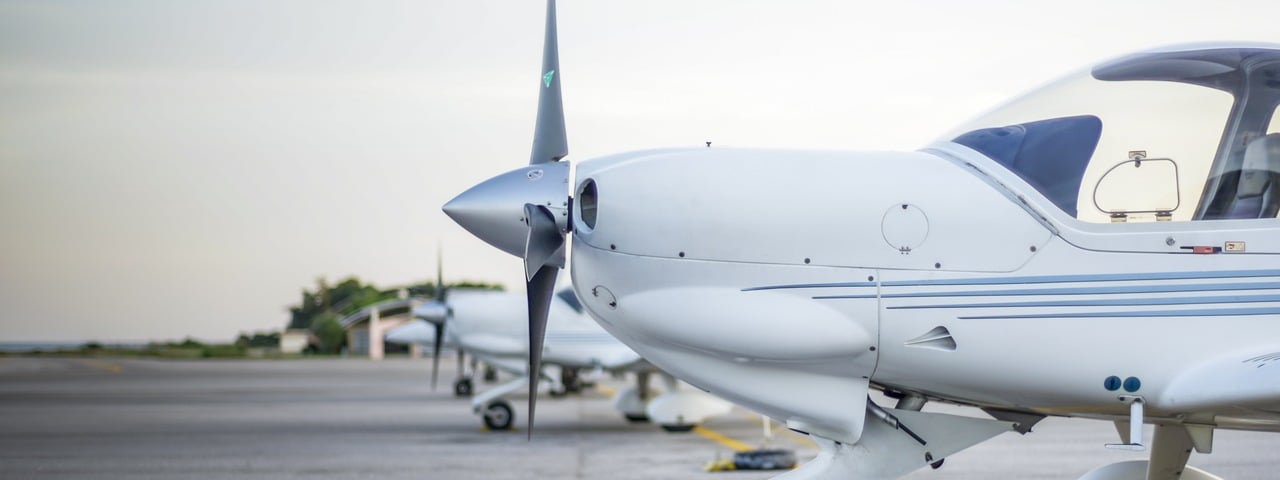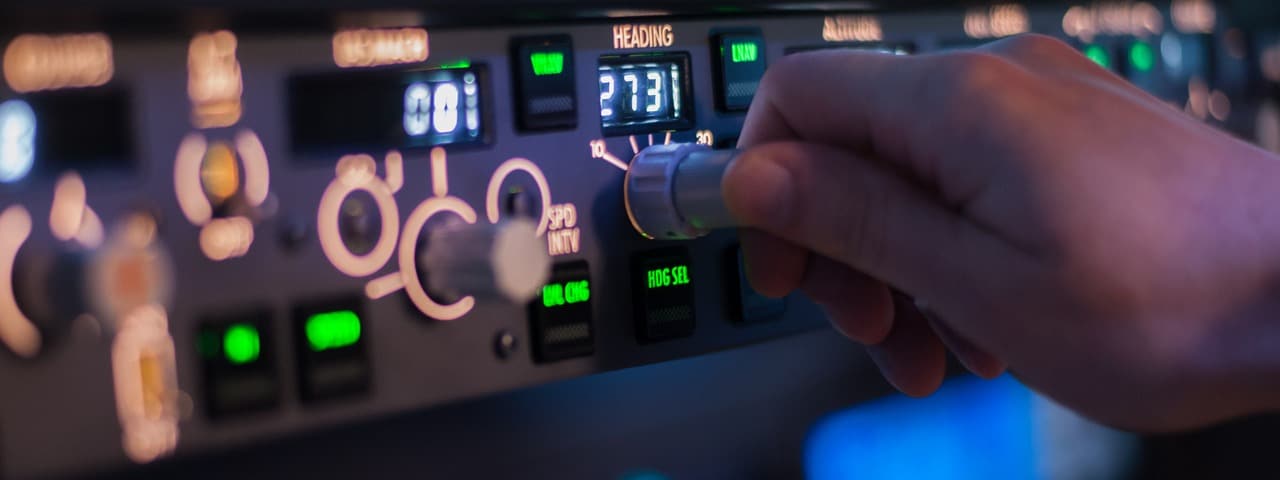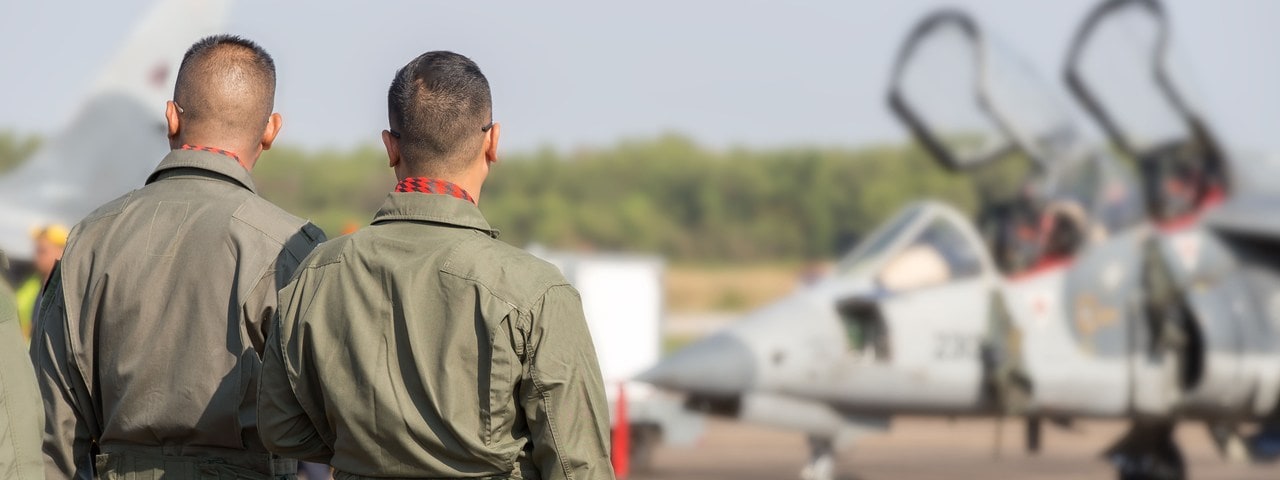The ultimate guide to pilot training in the UK
If you dream of taking to the skies, now’s the time to plan a career in aviation. Flight training is expensive and requires discipline and determination, but there’s nothing more rewarding than achieving your pilot’s licence – whether as a commercial pilot, an RAF pilot or a private aviator.
Now, you might be sitting at home wondering if your dream of flying private jet charters from continent to continent is still viable. In recent times, you may have seen airlines that were forced to shut down, and some pilots you follow or know may have been grounded for some time, left wondering when they’ll get back into the air. But the truth is, time moves on, and now is probably the best time to start your journey to becoming a licensed pilot.
The aviation industry fluctuates in sync with economic cycles, so now that you have survived a period where getting a job as a pilot was incredibly difficult, the demand for pilots is rising again.
Should I start pilot training?
Before we get into the details of flight training, we should first consider the current state of the aviation industry.
- Experienced pilots continue to retire, leaving room for younger pilots to take their place.
- While passenger air traffic hasn’t fully recovered, there are signs of the industry potentially opening up again.
- People will always need to fly for personal, business, or health reasons.
While we continue to live in unpredictable times, it has highlighted the need for invention, ingenuity, and innovation in the aviation industry. New ways of doing old things will come as a result of these difficult times, and if flying is to be your passion and your life, then your vital input is needed to keep the industry developing and moving forward.
At Air Charter Service (ACS), we believe flight school needs to be the social and educational kindling that keeps young and inspired pilots motivated to get the industry up and running smoothly again. The long and short of it is that you cannot fly a plane without proper training, so enrolling in flight school now will position you to meet the inevitable future demand for new pilots.
There will be no rush to graduate sooner, which means that you can better commit to your studies. Take that extra week to study for an exam, if it means that you’ll understand and grasp flying principles and concepts fully and that you’ll be a better pilot for it. This carries through to the practical part of your training – whether that’s with “armchair flying” (which is simply visualising yourself piloting various procedures from home, perhaps with a flight simulator computer program) or in gaining work experience volunteering to learn about flight ops or working in a fuel bay while you train. Pilots need to be dynamic and adaptable, and there is no better time to prove this in yourself.
Let’s take a look at the different types of pilot’s licence you can attain, what you need to do to qualify for each course, and what you can expect from the programmes. We’ll start with professional pilot training, move on to private pilot training, and finally, military pilot training.
Professional pilot training
The training of a commercial pilot and an airline pilot are two different things because the nature of each job requires different qualifications and levels of experience. An airline pilot is contracted by an airline to transport people and cargo locally and around the world, with two pilots operating the aircraft – a captain and a supporting first officer. A commercial pilot, on the other hand, flies for commercial reward (the same as an airline pilot) but is typically involved with private charter flights, aerial photography, crop dusting, firefighting or rescue work. It isn’t unusual for a commercial pilot to go on to become an airline pilot, with some additional training required to become eligible.
Choosing the right course for you
There are generally two types of professional flight training: integrated and modular.
- Integrated: This approach allows the cadet to finish flight training in one concentrated go. The intense focus of integrated training over a shorter period of time tends to boost your chances of employment in the aviation industry once you’ve achieved your licence. You can move from having no flying experience at all to achieving a “frozen” Airline Transport Pilot Licence (ATPL) in around 18 months, which means you’ve passed all 14 theoretical exams but still need to gain the required flight experience.
- Modular: This type gives trainees the flexibility to achieve their ATPL flying licence and take the theory examinations at their own pace, and through several different training organisations, in certain circumstances. Students most often opt for modular training if they need to spread the cost over time or are unable to commit to full-time training.
Entry requirements for most aviation courses
The standard entry requirement to begin pilot training is five GCSEs (including maths and English) and preferably two A-Levels. You also need to obtain a Part MED Class 1 Medical Certificate through the Civil Aviation Authority (CAA) before you enrol. Students hoping to enrol must also be at least 18 years of age.
How long does it take to qualify?
It’s rare to achieve an unfrozen ATPL pilot’s licence in under three years. Getting a frozen ATPL licence typically takes 14 to 18 months, at which point you can apply for a job as a first officer, or co-pilot, with an airline. After completing a minimum of 1,500 flying hours, your licence will be unfrozen.
Flying hours must include:
- 500 hours of multi-pilot flight time in a transport or commuter aircraft
- 500 hours as PIC under supervision (PICUS), or 250 hours as pilot-in-command (PIC), or 250 hours with a minimum of 70 hours as PIC and the remainder as PICUS
- 200 hours of cross-country flight time, with 100 of these hours as PIC or PICUS
- 75 hours of instrument time (of which a maximum of 30 hours can be instrument ground time)
- 100 hours of night flight as PIC or co-pilot.
It’s worth noting that, of the 1,500 hours of total flight time required, up to 100 hours can be completed in a suitable simulator – a Full Flight Simulator (FFS) or a Flight Navigation and Procedures Trainer (FNPT) – but only a maximum of 25 hours may be completed in an FNPT.
If you’ve secured employment with an airline, you could fulfil the 1,500 flying hour requirement within about 18 months. For non-airline professional pilots, it can take much longer. Keep in mind, though, that while most of the world is still grounded, this may take longer for both methods of acquiring flight hours.
What to expect from training
A frozen ATPL licence is a collection of aviation licences, including a commercial pilot’s licence (CPL) and a multi-engine instrument rating (IR). Training is made up of theoretical classes and examinations, plus time spent in a flight simulator. The actual flight school experience can differ widely, so make sure you do your homework before choosing.
- Draw up a shortlist of flight schools by location. If you need to stay at home, pick a school in close proximity; but if you have your eye on a flight school further afield, be prepared to add the price of accommodation to your pilot training costs.
- Most reputable flight schools have open days. Attend these to speak to cadets, and read any available case studies.
- Tour the school’s facilities and find out how large and modern its fleet of training aircraft is, as well as its safety record.
- Enquire about the school’s post-graduation employment rate.
How to begin the application process
There are usually six steps in the application process:
-
Get your Part MED Class 1 Medical Certificate through the CAA.
-
Begin your financing application (whether you intend to apply for a student loan or a bursary, or scholarship).
-
Decide on your preferred flight school and choose either integrated or modular training.
-
Most good flight schools offer introductory flying lessons, which then count as exemptions or flying hours already completed for your course. These lessons are an excellent way to be absolutely sure a flying career is definitely for you.
-
Fill out the application forms required by the flight school and CAA.
-
Schedule your start date. Reserving your place on the next course offered by your flight school of choice may require an unconditional, non-refundable, and non-transferable payment.
Your career prospects once licensed
A good way of researching your career prospects as a licensed pilot is by studying the recruitment pages of airlines and private plane charter companies. Sign up to forums and career pages, and get talking to commercial pilots and flight school cadets.
Next, let’s dig a little deeper. For instance, the Office for National Statistics’ Annual Survey of Hours and Earnings, published in 2020, listed aircraft pilots/flight engineers as the highest-paid job in the UK, with average earnings before tax of £92,330. Meanwhile, according to Glassdoor, the average salary for a first officer as of May 2021 was £35,598 per year – higher than that predicted for university graduates (£27,109).
Prospective aviation students are advised to attend annual expos such as Pilot Careers Live, Europe’s leading aviation career exhibition, which is currently a virtual event. This will help them gain a comprehensive knowledge of every career opportunity and training process – from leading pilot training academies and military air forces to universities and access to pilots, former students and airlines. This exhibition is one of the most effective ways to obtain the best independent, professional advice about a career in aviation.
How much does it cost to become a commercial pilot?
It can cost between £70,000 and £120,000 to complete your commercial pilot training. If a loan of that size isn’t an option, consider these ways of making training more accessible.
- Talk to your flight school about the most affordable options for you. This could mean staggering your payments over a year or more, or undertaking a modular training programme that allows you to budget for the various training phases over a longer period of time.
- Shop around for flight schools that offer value for money without compromising the quality of training. Some schools structure their courses in a way that saves money for the cadet – one school, for instance, offers the elementary flight phases of training at its satellite base in Spain.
- The good news, if you’re considering a career in aviation, is that many airlines and private jet charter companies are attempting to make training more affordable by offering full and part sponsorships. It’s well worth contacting airlines and flight schools to find out more about their current sponsored cadet pilot programmes.
Private pilot training
You might dream of flying just for the love of it or hope to buy and fly your own aircraft someday. Or perhaps you’d like to be able to fly your own private plane charter whenever it suits you. Maybe you just don’t know for sure yet whether you want to invest all that time and money into becoming a commercial pilot. If this sounds like you, then a private pilot licence (PPL) is probably the way to go. A PPL allows you to fly certain types of smaller aeroplanes and helicopters and is recognised around the world.
Choosing the right course for you
If you train as a private pilot, you’re effectively working towards the aviation equivalent of a driver’s licence. Once achieved, you can pilot an aircraft privately and with non-commercial (non-paying) passengers on board. To retain your licence going forward, you must maintain your skills as a pilot by flying a specified number of hours each year. A PPL must be renewed after five years.
Entry requirements for private pilot courses
Applicants must be at least 17 years old and have a valid CAA Part-MED Class 2 Medical Certificate.
How long does it take to qualify?
It takes most trainees around 60 hours to pass their theory and practical tests. This can be completed in as little as two weeks or as long as two years, depending on how much time you have to devote to training. Keep in mind that the UK’s inclement weather can also affect how quickly you manage to complete hours in the air!
Individuals in a hurry to get their PPL sometimes opt for intensive courses abroad. Accelerated courses are available in the United States, such as the Accelerated Flight & Instrument Training Center’s 14-day intensive PPL course, which can cost between £7,965 and £11,870. Although you’ll pay a lower hourly rate than in the UK, you will, of course, have to spend more on travel and accommodation.
What to expect from training
Training for your PPL includes:
-
Nine written theory examinations, each with a 75% pass mark. Theoretical training subjects include air law, aircraft general knowledge, flight performance and planning, human performance and planning, meteorology, navigation, operational procedures, principles of flight and communications.
- Completing at least 45 hours of flying training (including 10 hours of solo flying, five hours of solo cross-country flying, and at least one solo flight of no fewer than 150 nautical miles, with full-stop landings at two or more different aerodromes other than the aerodrome of departure).
In addition to your course components, it can be very helpful to read flying magazines, join a flying association or club, and get active on online forums for pilots and general aviation enthusiasts.
How to begin the application process
-
Make sure you’re eligible to train for a PPL.
-
Obtain your Part-MED Class 2 Medical Certificate through the CAA.
-
Take several introductory flying lessons at your local flight school, and check that these count as hours completed towards your licence. This is also a good way to make sure you definitely want to go ahead with PPL training.
- Fill out the application forms required by your chosen flight school and schedule your start date.
Your career prospects once licensed
A PPL allows you to fly a small private plane, but you won’t be able to take up a job as a pilot. If you want to fly larger aeroplanes for monetary reward, you’ll need to train for a commercial pilot’s licence (ATPL) – see our section above for more information.
The costs involved
Achieving a PPL costs around £10,000. The final cost depends on the options offered by your chosen flight school and the number of hours it takes to complete your licence.
Military pilot training
RAF pilots receive free basic and specialist training in exchange for an agreed term of service. Your service and experiences are bound to be unique and meaningful, as your acquired skills and natural abilities are channelled into the type of work best suited to you – whether that’s as a fast-jet pilot carrying out air-to-air combat or ground-attack missions, a multi-engine transport pilot flying military support and delivering humanitarian aid, or a helicopter pilot ferrying troops into combat, or delivering equipment and supplies.
If you’re interested in aircraft, analysis and mathematics, gaming and computers, then a career as an RAF pilot might just be for you.
Choosing a course that’s right for you
Becoming an RAF pilot is a lengthy process that requires high levels of commitment and energy, so it’s important to be certain this is something you really want and are physically and mentally prepared for. Training options include:
- RAF Air Cadets
Trainees aged 12–17 can join the RAF Air Cadets, which has more than 40,000 members nationwide. The Cadets is not a recruiting arm of the Royal Air Force, and membership in no way guarantees a place in the RAF pilot training programme; however, it can give you valuable hands-on experience through courses, activities and events, helping you to decide whether an RAF pilot career is really for you.
The RAF Air Cadets’ Air Training Corps (ATC) is divided into six regions, 34 wings and more than 900 squadrons within communities around the UK. Meanwhile, its Combined Cadet Force (CCF) brings together cadets from the Royal Navy, Army and RAF in about 200 independent and state schools across the country.
It’s interesting to note that about 40% of officers and 50% of all aircrew (including pilots, navigators and engineers) in the RAF are ex-cadets. They also tend to excel in basic training and stay in the service longer than their colleagues do.
- RAF Pilot Training
The RAF has two training programmes for its pilots. Both involve providing expensive training in exchange for the trainee agreeing to serve for a contracted period – typically a 12-year short-service commission or 16 years of service/until reaching the age of 38. This may seem like a long time to commit to a single employer, but keep in mind that it costs the RAF about £5.7 million to train a squadron pilot.
Entry requirements for RAF pilot training
Trainees must be aged between 17-and-a-half and 25, and meet the following criteria:
- Must have English, maths and at least three other subjects at GCSE Grade C/4, or SNE Grade 5, or SCE Standard Grades at Grade 2/SNE. Must also have at least two A2 Levels/3 Highers at Grade C or above (excluding General Studies and Critical Thinking), which must total a minimum of 64 UCAS points.
- Must be a citizen of the United Kingdom or a holder of dual UK/other nationality.
- Must commit to a minimum of 12 years’ service.
- Must meet stringent health and fitness criteria.
- Must pass a general fitness test.
How long does it take to qualify?
It takes at least four years to qualify as an RAF pilot.
What to expect from training
- Foundation training: Student pilots must pass a 24-week Initial Officer Training (IOT) at the RAF College Cranwell in Lincolnshire. This training develops your leadership and management skills, and includes theoretical and simulator training.
- Specialist training: On the Elementary Flying Training course, students will complete 55 hours of flying training in Tutor or Prefect aircraft. Students are then streamed to fast jet, multi-engine or helicopter flying training.
-
Fast-jet (21 months) – Once students have flown the Texan T1 at RAF Valley, they’re awarded their pilot “wings” and progress to flying the Hawk T2, also at RAF Valley. After successfully completing the tactical weapons phase, they move on to an Operational Conversion Unit to train on the specific aircraft they’ll be flying in a front-line role.
-
Multi-engine (10 months) – Students start by flying the Tutor/Prefect and the Phenom at RAFC Cranwell. After achieving their pilot wings, they move on to an Operational Conversion Unit to train on the aircraft they’ll be flying operationally.
-
Rotary (helicopter pilot) (18 months) – Students who are streamed to rotary learn how to fly both single-engine Juno helicopters and multi-engine Jupiter helicopters at RAF Shawbury in Shropshire. Once awarded their pilot wings, trainees proceed to an Operational Conversion Unit to train on the helicopter they’ll be flying operationally.
- Foundation tour: This means you may be detached overseas, which can be for a few days or a few months. You could fly on a training exercise in allied airspace or carry out your role on operations over hostile territory.
- Ongoing development: Military pilots are given the opportunity to develop their professional skills throughout their careers. Training to fly different aircraft at Operational Conversion Units is provided, as well as opportunities for structured command and staff training.
- Transferable skills: The skills you gain throughout your RAF career could enable you to do a number of civilian jobs, such as a commercial airline pilot, pilot instructor or examiner, as well as management positions.
How to begin the application process
The best way to begin the process of applying to the RAF is to visit one of its Armed Forces Careers Offices (AFCOs). The staff at these recruitment centres can answer your questions, offer advice about which roles could suit you best and help you through the application process.
Your career prospects once licensed
If you opt to join the RAF on an initial commission of 12 years, you can be selected to serve on a pension-earning commission of either 20 years’ service or until you reach the age of 40 (whichever is later) during those 12 years. Promotion to flight lieutenant is dependent on time served/satisfactory service, while promotion to squadron leader and above is by competitive selection.
RAF annual pay currently ranges from £15,864 to £113,794. Typically, your pay during training will be between £15,864 and £20,793 with benefits, and post-training salaries begin at £27,818 (as a flying officer) with benefits. These can include subsidised rent and food, free gym membership, healthcare, six weeks’ annual leave and travel.
The costs involved
As mentioned previously, it can cost as much as £5.7 million to train an RAF squadron pilot. Although the RAF bears most of this cost, trainees are required to sign a service contract in exchange for their training.
The journey to becoming a pilot isn’t an easy one, whether it’s for commercial, airline, or military purposes. It can be difficult, expensive and may require some sacrifice on the part of the student. But speak to any working pilot, and they’ll tell you there just isn’t a better day at the office than having the privilege and responsibility of flying an aeroplane through the clouds and into a breaking dawn.
Take to the skies with Air Charter Service (ACS)
At ACS, we want to help support the future of aviation. To back the next generation of aviation leaders and aerospace scientists, we’re offering student grants and aviation scholarships worth up to £4,000. If you’re a bright, innovative and passionate aerospace student, we’re eager to hear from you.
For more information about our aviation and student grants or to book a private jet charter, please contact your local ACS office.
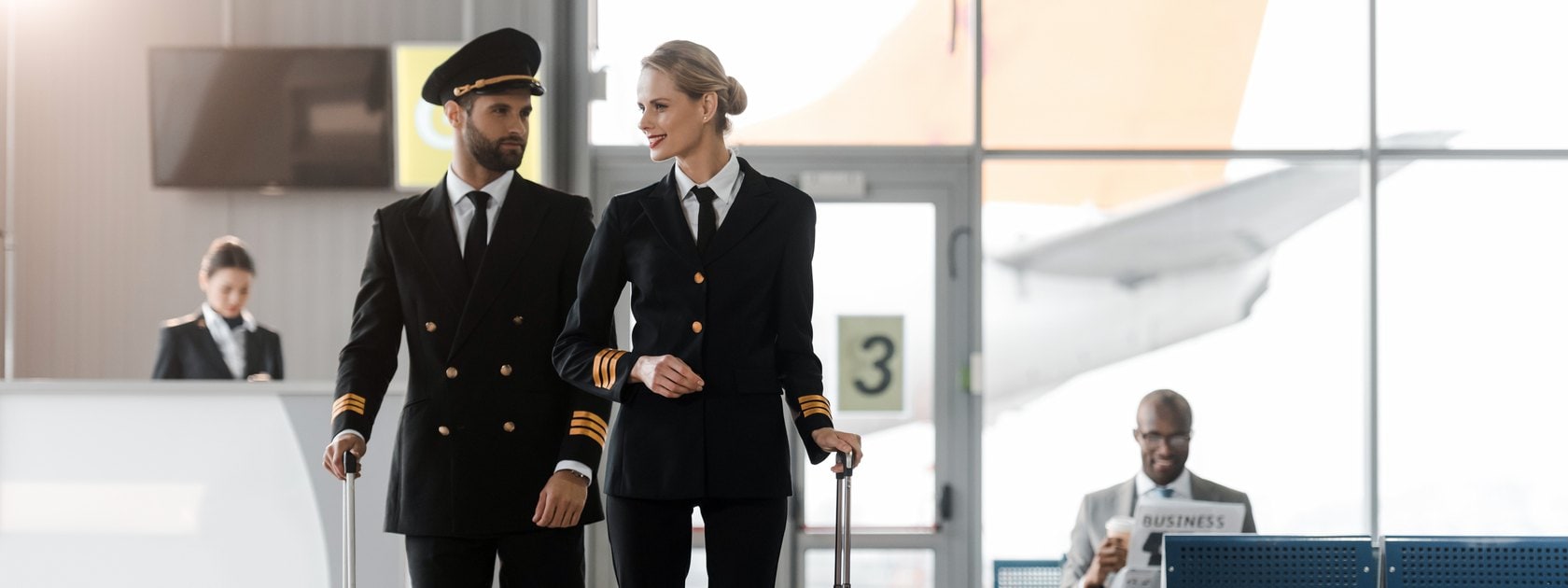
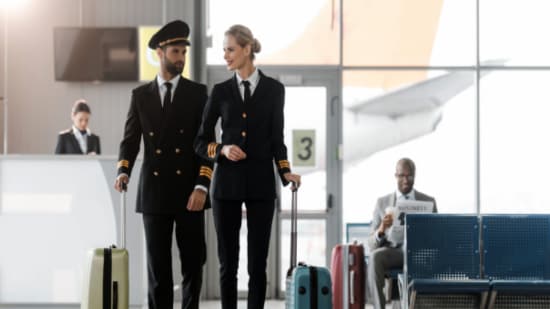 Have you always dreamt of being able to take to the skies as a commercial, private, or military pilot? This comprehensive guide to pilot training in the UK tells you everything you need to know, including choosing the course that’s right for you and how long it takes to qualify.
Have you always dreamt of being able to take to the skies as a commercial, private, or military pilot? This comprehensive guide to pilot training in the UK tells you everything you need to know, including choosing the course that’s right for you and how long it takes to qualify.


